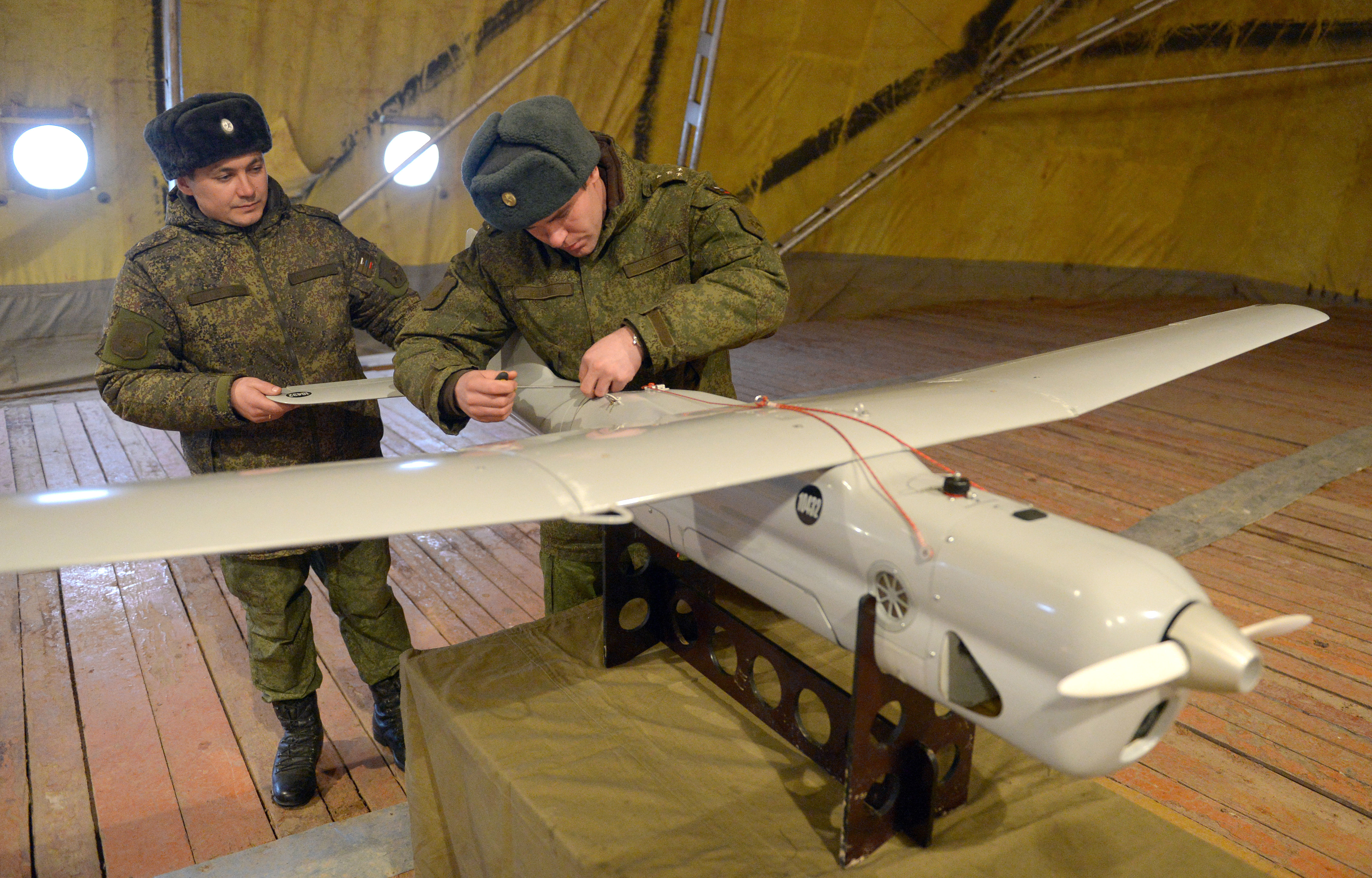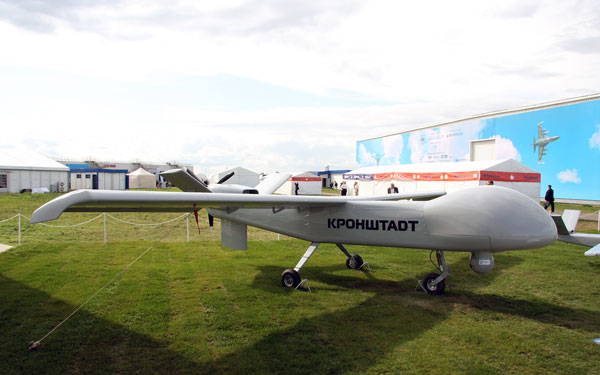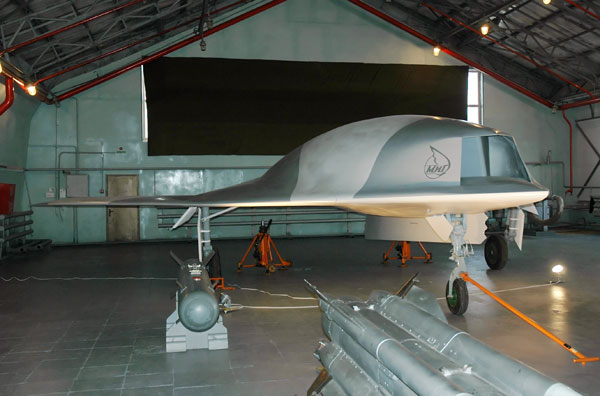
A cadet of the Defence Ministry's State Center of Unmanned Aviation during the launch of the Orlan-10 unmanned aerial vehicle at a training field in the Moscow Region.
Ria Novosti/Evgeny BiyatovThe military operations in Syria have seen the most extensive Russian use of unmanned aerial vehicles yet. Initial deployments of Russian drones in the Middle East were first reported long ago as the devices were set to reconnaissance work, tracking the movement of Islamist groups and the aircraft of the U.S.-led anti-terrorist coalition. According to Israeli defense analysts, Russia has used drones to create an entire surveillance network in the skies over Syria.
However, large-scale use of Russian UAVs in Syria began only after the official start of operations by the Military Space Forces on Sept. 30, 2015.
The key task of combat drones in Syria is in the use of precision-guided weapons. Successful missile guidance requires the clear fixing of targets via a camera or laser guidance system. This can be done directly from the aircraft carrying the weapon, but this function also severely limits its mobility, thereby boosting the application of drones.
Modern UAVs also effectively facilitate the detection of underground fortifications, pillboxes and minefields, and use specialized equipment to scan airspace and prevent incidents involving Russian pilots and aircraft belonging to the Western coalition.
There is little accurate information available about which Russian UAVs are supporting the Syrian campaign. However, the overall range of drone types that are in service with the Russia military or in the development stages is known.
The Orlan-10 (“Sea eagle”) is used by the reconnaissance forces, where its minimal 33-lb (15 kg) weight offers the crucial advantage of a long flight time of almost 17 hours. The drone, which uses a parachute to land, can also be launched in field conditions using a mobile catapult.
 Cadets of the Defence Ministry's State Center of Unmanned Aviation during preparations for the launch of the Orlan-10 unmanned aerial vehicle at a training field in the Moscow Region. Source: RIA Novosti/Evgeny Biyatov
Cadets of the Defence Ministry's State Center of Unmanned Aviation during preparations for the launch of the Orlan-10 unmanned aerial vehicle at a training field in the Moscow Region. Source: RIA Novosti/Evgeny Biyatov
The Dozor-600 (“Watch”) is a more complex design and is in fact a small aircraft weighing less than a ton. Using a runway to take off and land, the model can carry surveillance equipment, radar, and offensive armaments.
 Dozor-600. Source: Vitaly Kuzmin/Wikipedia.org
Dozor-600. Source: Vitaly Kuzmin/Wikipedia.org
Heavy strike drones are also now under development. The Skat (“Skate”) UAV is a complete aircraft capable of flying at speeds of up to 500 mph (800 km/h) and at an altitude of 40,000 feet, launching attacks with self-guided missiles and bombs over an operational range of 2,500 miles. The Proryv (“Breakthrough”) UAV is more compact but greatly exceeds the operational ceiling of the Skat, flying as high as 65,000 feet.
Capacities for producing drones in Russia often have to be created from scratch, although there is usually some existing usable technology that has already been proven in military aircraft. For this reason the flagship production of UAVs has been done by the aviation giants MiG, Sukhoi, Tupolev and Yakovlev.
Currently under development are UAV cameras allowing recognition of visual spectra that are invisible to the human eye. In the city of Rybinsk, north-east of Moscow, engineers have set up a special design office for the development and production of UAVs. This center not only builds airframes and engines for the aerial vehicles, but also the entire electronic component, from onboard computers to sensors and cameras.
 MiG’s Skat (Skate) unmanned combat air vehicle (UCAV) at the 8th international aerospace show MAKS 2007 in the town of Zhukovsky near Moscow. Source: Nikolai Novichkov/TASS
MiG’s Skat (Skate) unmanned combat air vehicle (UCAV) at the 8th international aerospace show MAKS 2007 in the town of Zhukovsky near Moscow. Source: Nikolai Novichkov/TASS
Russian drone development has a long way to go, however, with work lagging behind the programs of the U.S. military, which has more than 15 years of experience building combat drones. In Russia, attention only turned to this new resource after the armed conflict in the breakaway Georgian region of South Ossetia in 2008. A priority area for further refinement is now heavy strike drones that can potentially replace manned aircraft.
Drone development also necessitates the broad computerization of the armed forces, without which UAVs are ineffective. The first steps have already been taken, positioning Russia to become a leader in the use of unmanned aerial vehicles, as their contribution to the Syrian operations shows.
All rights reserved by Rossiyskaya Gazeta.
Subscribe
to our newsletter!
Get the week's best stories straight to your inbox